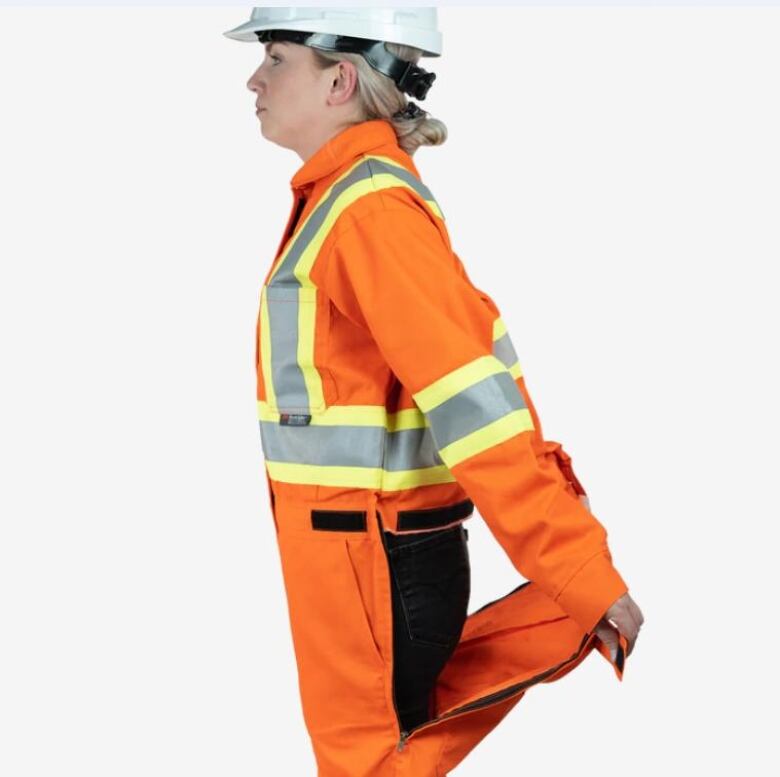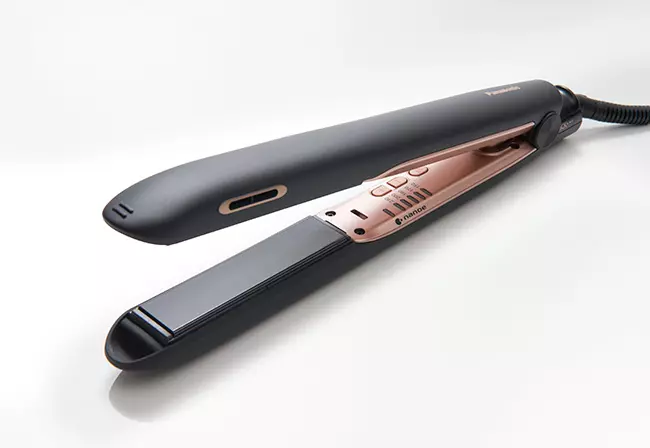Excited to buy gear she needed for her new job as an apprentice electrician, Claire Nicol went to a large retail store that specializes in workwear.
However, what she found on the racks wasn’t designed with bodies like hers in mind.
“I walked in there and they said they don’t stock women’s work clothing in the store, and that they only sell it online.”
She tried on the men’s work pants, but couldn’t find a pair that fit right.
“The first pair I put on, I looked like I was wearing parachute pants,” Nicol said.
– Alicia Woods, former mine worker
Other pairs she tried either rode too high on the hips or were too long in the legs. In other cases, the inseams were too short for a job that requires workers to frequently bend, crawl into tight spaces and climb ladders.
She said a simple pair of jeans, while permitted on some job sites, don’t have the right high-durability fabric for heavy work and tend to wear out quickly. Electrical work, Nicol’s chosen trade, often requires flame-resistant fabric.
“Jeans are more for fashion than work,” Nicol said.
Women in search of work pants are often directed online, as Nicol was, but that eliminates the chance to try the fit in store. Nicol has ordered some work gear online only to have to ship it back when the fit wasn’t right.
Also galling, Nicol has found a lot of work clothes for is lower quality than men’s gear, and often costs more.
“I’m wearing out pants in a few months and they’re not cheap,” she said.
Nicol said it’s a common problem among her female co-workers, who sometimes resort to customizing men’s work pants and other gear to make it fit right.
Started her own company
The struggle to find work clothes that fit isn’t new to former mine worker Alicia Woods, in fact it prompted her to start her own line of work garments, designed to fit the female form.
Woods was issued a pair of work coveralls for a mining job in 2000. The problem? The front fly wasn’t much help when it came time for a bathroom break.

Instead of disrobing each time she needed to use the toilet, she would abstain from water before heading to work.
“I remember going to the workwear store and it was all men’s stuff,” she said. “It was big and baggy and it didn’t fit well.”
She tried shopping online, but couldn’t find what she wanted there either.
“All I could find was garden coveralls, which weren’t going to meet my needs in an industrial setting.”
Out of that frustration. Woods began to work with a seamstress to create a coverall fitted to the female body. She added to her coveralls an invisible access flap at the back for bathroom trips.
After that, Woods started a business selling work clothes sized for women and called her new venture Covergalls. The business, based in Sudbury, started in 2014 and has since expanded to offer other work attire, including high-visibility shirts, bibs, safety gloves and cargo pants.
The sizes are more customized to account for the fact that standard men’s sizes often don’t work for the more varied dimensions of women’s bodies through the torso.
‘I want to make women feel included’
As Canada faces a serious shortage of skilled trade labour, Woods said offering women work clothes that fit properly could help attract them to the trades.
“Work wear is part of inclusivity,” she said. “How included does a young female feel if she has to wear her father’s clothes or her brother’s clothes? I think it is a bit of a barrier to entry. I want to make women feel included in the job that they want to perform.”

Other makers of work clothes, including Carhartt and Cat, do have sections of their website dedicated to female clients.
While this is encouraging, Nicol said retailers could really help simply by making an effort to stock women’s work clothes in stores in all sizes.
“Women are all shapes and sizes, whereas I think men are a little more standard in size,” she said. “It would be great if they had pants for curvy women and pants for women that are a bit slimmer. Some of us have bigger hips than others. Having them in store so we can try them on, that’s the biggest thing.”








